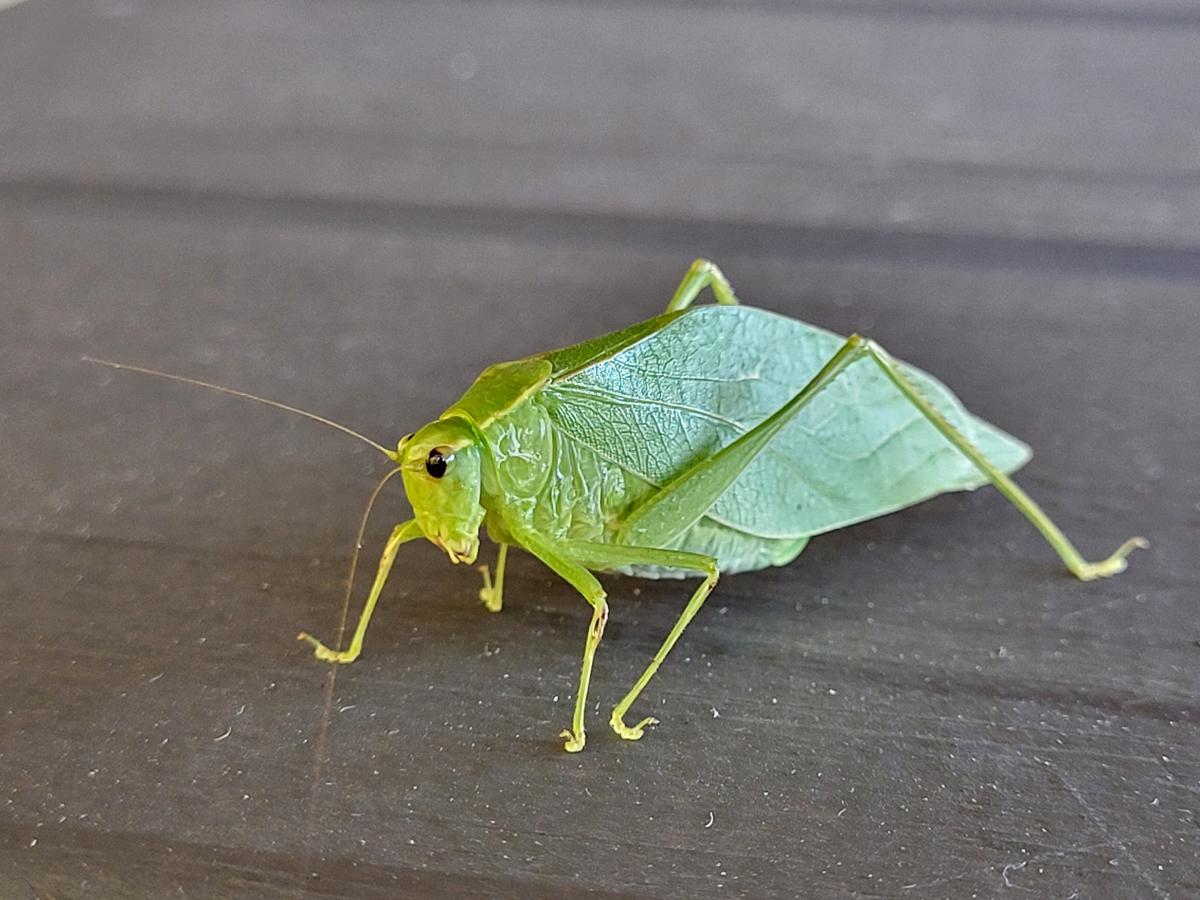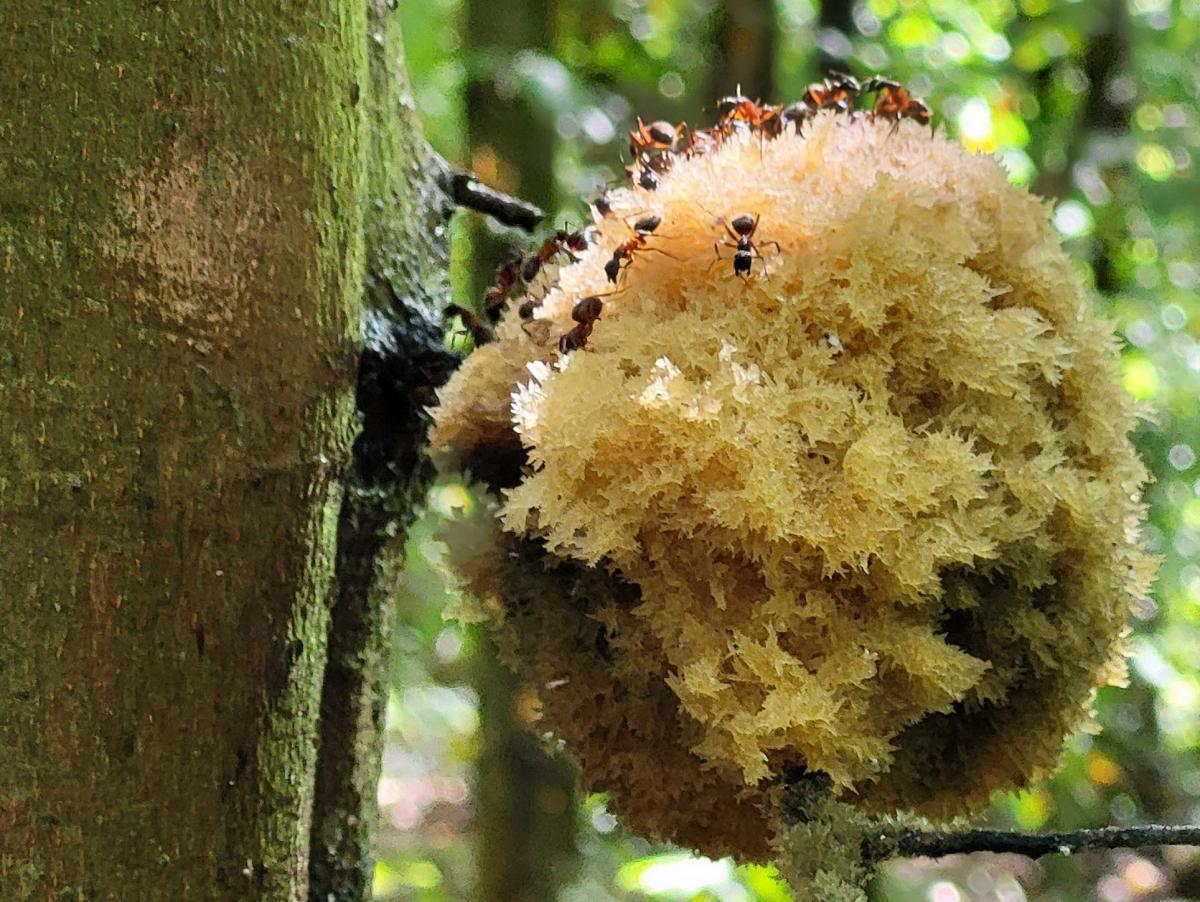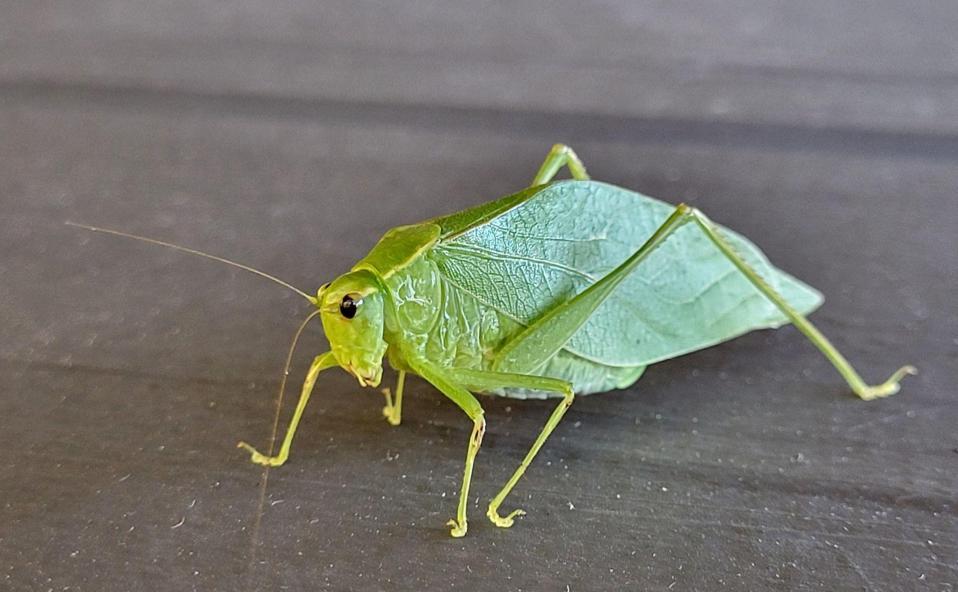Happy Mystery Monday! What leafy-looking critter did we find?
 Last week, we asked you about the black sooty mold (Scorias spongiosa), also known as honeydew eater. This fungus is part of an interesting and complex series of ecological relationships. In the highlighted photo, the beech blight aphids produced a sugary honeydew, which attracts ants and wasps. This honeydew then collects on surrounding leaves, generally creating a thin black film of black sooty mold on the beech tree leaves. When the honeydew is in high concentration, the black sooty mold produces a large mycelium (as seen in the picture) that looks like a sponge. This mycelium starts as a tan color and then matures into a black mass (which we often see closer to winter). In this example alone, we have at least five species involved *that we can see*! Nature is so cool and complex!
Last week, we asked you about the black sooty mold (Scorias spongiosa), also known as honeydew eater. This fungus is part of an interesting and complex series of ecological relationships. In the highlighted photo, the beech blight aphids produced a sugary honeydew, which attracts ants and wasps. This honeydew then collects on surrounding leaves, generally creating a thin black film of black sooty mold on the beech tree leaves. When the honeydew is in high concentration, the black sooty mold produces a large mycelium (as seen in the picture) that looks like a sponge. This mycelium starts as a tan color and then matures into a black mass (which we often see closer to winter). In this example alone, we have at least five species involved *that we can see*! Nature is so cool and complex!
#adkinsarboretum #mysterymonday #blacksootymold #beechtree #ecologicalrelationships #mysterycritter
 Adkins Mystery Monday is sponsored by the Spy Newspapers and Adkins Arboretum. For more information go here.
Adkins Mystery Monday is sponsored by the Spy Newspapers and Adkins Arboretum. For more information go here.



Write a Letter to the Editor on this Article
We encourage readers to offer their point of view on this article by submitting the following form. Editing is sometimes necessary and is done at the discretion of the editorial staff.